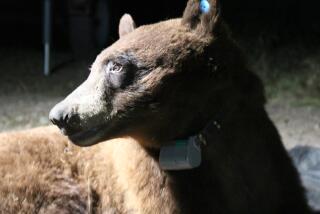Map of Proposed Valley City Unveiled
- Share via
Organizers of a campaign to study pulling the San Fernando Valley out of the city of Los Angeles made public a map Thursday of what could become the boundaries of the nation’s sixth-largest city, slicing off the Valley along the crest of the Santa Monica Mountains and taking most of Cahuenga Pass with it.
“We are all going as one. . . . We are all in this together,” said Jeff Brain, co-chairman of Valley Voters Organized Toward Empowerment (Valley VOTE). The group was formed by residents who advocate a vote on Valley secession.
The proposed borders encompass an area that is home to 1.2 million people, surrounding the city of San Fernando and the unincorporated area of Universal City on all sides, and squeezing right up to the borders of Burbank, and the Los Angeles neighborhood of Hollywood. The lines follow the current L.A. city borders to the north, west and east. On the south, the border would largely follow Mulholland Drive; residents on the south side of that road would remain in the city of Los Angeles, while residents on the north side would join the Valley.
In Cahuenga Pass, the line would come from the eastern city limits at Burbank south down the eastern edge of Barham Boulevard to the Hollywood Freeway, then down the western edge of the Hollywood Freeway to Mulholland Drive. Universal City would not be included.
The border would follow the southern edge of Mulholland to the intersection with Owen Brown Road above Woodland Hills, then south along the eastern edge of Owen Brown Road to the present Los Angeles city limits, against Calabasas, Hidden Hills and Ventura County.
More to Read
Sign up for Essential California
The most important California stories and recommendations in your inbox every morning.
You may occasionally receive promotional content from the Los Angeles Times.













